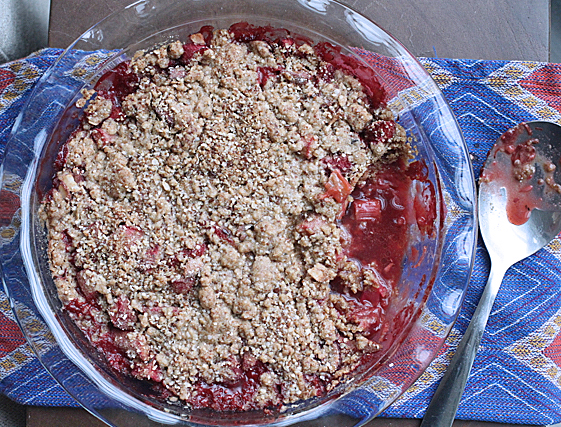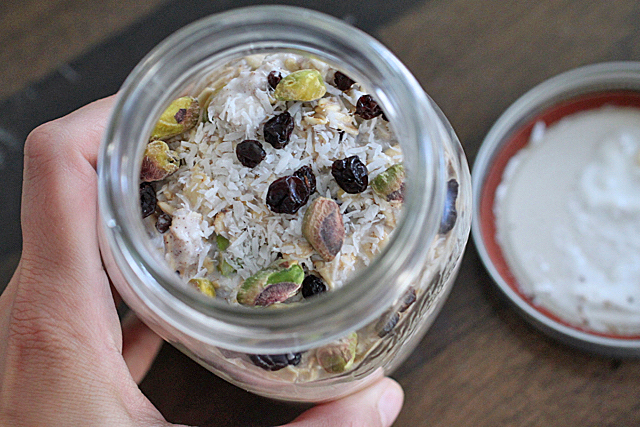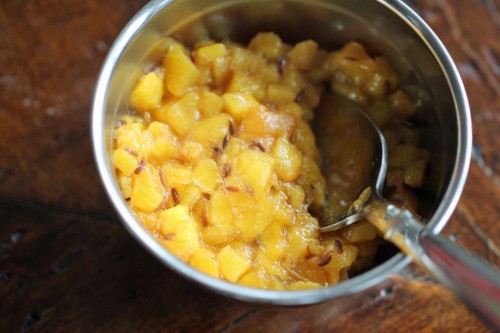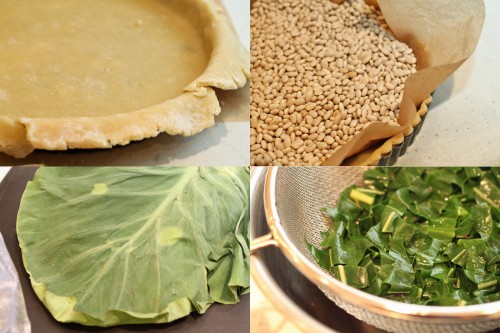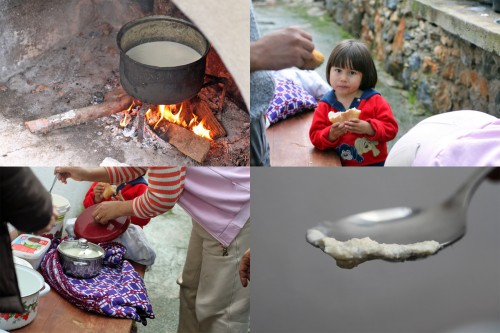Crab & Callaloo Quiche
So I’ve been flushing out dishes for an event for April. The event is for Heifer International and honors their Pass on the Gift tradition, specifically for their Haiti projects. It’s an incredible organization that promotes sustainable solutions for impoverished families worldwide, and I’m really excited to be involved with them.
I’m designing some Haitian-inspired dishes for the event, and this one comes from a popular West Indian side called callaloo, made from the eponymous greens. The greens are the leaves of the dasheen bush or taro plant and are also used in Pacific Island and Asian cooking. They can be found at West Indian markets but swiss chard, spinach and even collards make a great substitute here.
Callaloo, the side, is thick and stew-like with roots tracing back to West Africa. The greens are flavored with salt pork, shallots or onions, garlic, ginger, habanero pepper and bouillon. The mixture is roughly blended and coconut milk is used to thin it out. Oftentimes, crab is added, and it’s such a rich, distinctive dish. I was eating a spinach and bacon quiche one day, and the callaloo just mentally translated. I had to see what would happen if I changed its form.
My husband went a bit nuts for this, I have to admit. He grew up eating callaloo and couldn’t get over how the flavor of the dish could transplant into a quiche. The greens, the crab, a salty porkiness, garlicky and heat from the chilies – it’s an exciting combination. Oh, and this crust recipe, though involved as most tart shells are, is pretty easy and foolproof as far as crusts go – crunchy, buttery and neutral (could definitely work for sweet applications). It’s my go-to crust. Enjoy!
Ingredients
Crust:
1 ½ cups all-purpose flour
¾ tsp salt
¼ tsp sugar
1 stick unsalted butter, cold and cut into small cubes
1 egg
1 tsp water
Filling:
1 slice thick-cut bacon, cut into small dice
½ habanero pepper, seeded and ribs removed, minced
1 small shallot, cut into a small dice
¼ tsp minced ginger
2 or 3 cloves garlic, minced
1 bunch callaloo, spinach, or swiss chard, roughly chopped, blanched and squeezed of excess water* (equivalent to 1/3rd cup cooked)
¼ lb peekytoe, lump, or jumbo lump crabmeat
1 scallion, finely chopped
1 tsp fresh thyme, finely chopped
1 tbsp cilantro, finely chopped
1 egg
2 egg yolks
3/4 cups coconut milk
Salt and freshly ground pepper to taste
Procedure
Preheat oven to 375° F.
For the crust, in a food processor, pulse together flour, salt and sugar. Scatter the cold cubes of butter over the dry ingredients and pulse until the butter is cut in and the texture looks like sandy peas or a coarse meal. In a small bowl, lightly beat together the egg and water. Add in increments, pulsing, until the dough sticks together. There will still be a lot of crumbly bits that haven’t incorporated – that’s okay.
Turn the dough out onto a work surface or a piece of parchment paper. LIGHTLY, knead the dough to make sure everything is incorporated. I literally just press it together a bit. Place into plastic wrap and create a flattened disk. Refrigerate for a minimum of 2 to 3 hours (and up to a day).
On a floured work surface or in between pieces of parchment paper (with flour), carefully roll out the dough with a rolling pin until uniform thickness and large enough for a 9 or 9 ½ inch tart shell. Carefully transfer to the greased tart shell and press carefully into the sides. Try not to stretch the dough at all. Trim any excess edges and dock or prick holes all over the surface of the dough with a fork. Wrap shell in plastic wrap and freeze for a minimum of a half hour.
Remove tart shell from freezer and plastic wrap and place on a baking sheet. Fit a piece of parchment paper on the surface of the dough and weight down with dried beans or baking weights. Bake for 20 minutes. Remove baking weights or beans and parchment paper and bake for another 10 minutes to brown. Let cool slightly.
Turn oven temperature down to 350° F.
For the filling, heat a medium skillet over medium-high heat. Add bacon and brown. Remove bacon with a slotted spoon and transfer to a paper towel-lined plate. Turn heat down to medium-low, and add pepper, shallot and ginger. Add a touch of salt to draw out the moisture. Cook for 2 to 3 minutes until shallots are translucent. Add garlic and cook for another minute until fragrant. Remove to a bowl and let cool.
Add to the shallot mixture, the browned bacon, blanched callaloo, crab, scallion, thyme and cilantro. Mix thoroughly and season to taste.
In a separate bowl, beat together egg, egg yolks and coconut milk and lightly season.
Spread crab and callaloo mixture evenly over the bottom of the tart shell. Pour egg / coconut milk mixture evenly on top. Bake for 25 minutes. The edges should be firm and the middle slightly jiggly.
*Callaloo should NOT be eaten raw. It contains a toxin, calcium oxalate, that can cause itching and constriction of the throat. Always cook callaloo thoroughly before consuming. To blanch the callaloo or other greens, bring water in a medium-sized pot up to a boil. Add a great deal of salt. Also, prepare an ice bath (a bowl with ice and cold water). Add callaloo to pot. Cook for 2 to 3 minutes. Strain and plunge into the ice bath to stop cooking. Remember to wring out any excess water from the greens.





